With a resume like that it makes sense that Gdańsk devoted 2011 – the 400th anniversary of Hevelius’s birth – to honouring what one local publication called 'The Man of the Millennium.' Normally recognised with a week each year, Hevelius was upgraded to a full year’s worth of activities, events and celebrations to honour all his achievements.
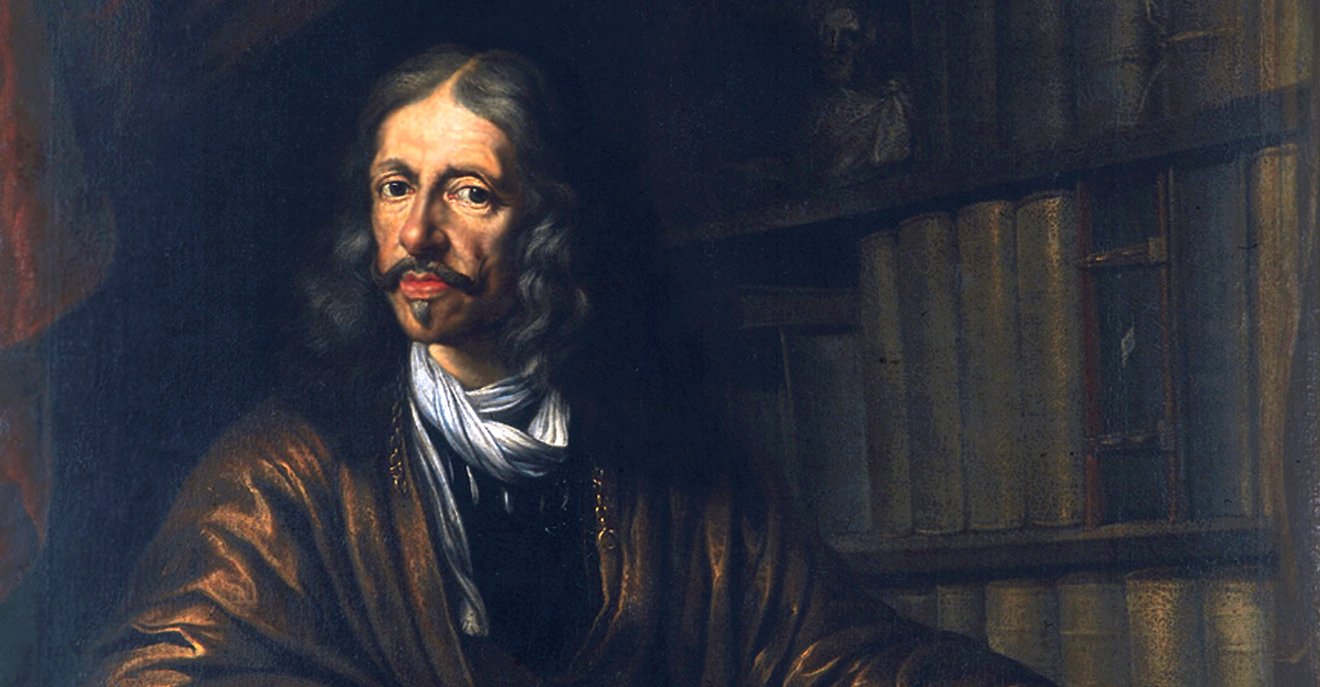
A life in Gdańsk
Born in Gdańsk in 1611 into a wealthy German-speaking family, Hevelius was one of three brothers and six sisters and the only male child to make it to adulthood. The German-Czech children of Abraham Howelcke and Kordula Hecker had a privileged upbringing, and Hevelius was sent away to a boarding school north of Bydgoszcz, where he would learn Polish. Later in Gymnasium (junior high school) Hevelius was taught by Peter Cruger, who encouraged the boy’s early fascination with mathematics and astronomy.Though Hevelius chose to pursue law at Leiden University in Holland, his interest in astronomy was always at the forefront of his mind. After leaving school Hevelius travelled around Europe seeking out leading astronomers like Pierre Gassendi and Ismael Boulliau before his parents called him home – just short of his final destination, Galileo in Italy.
The summons to Gdańsk meant Abraham and Kordula were ready for Hevelius to take over the family brewery. Hevelius did just that, marrying neighbour Katherine Rebeschke in 1635 and embracing the family tradition of brewing beer. Yet despite his devotion to beer (the Hevelius family brewed the famous local Jopen beer and Johannes helmed the local brewing guild), the pull of astronomy was one he could not ignore.
Astronomical achievements
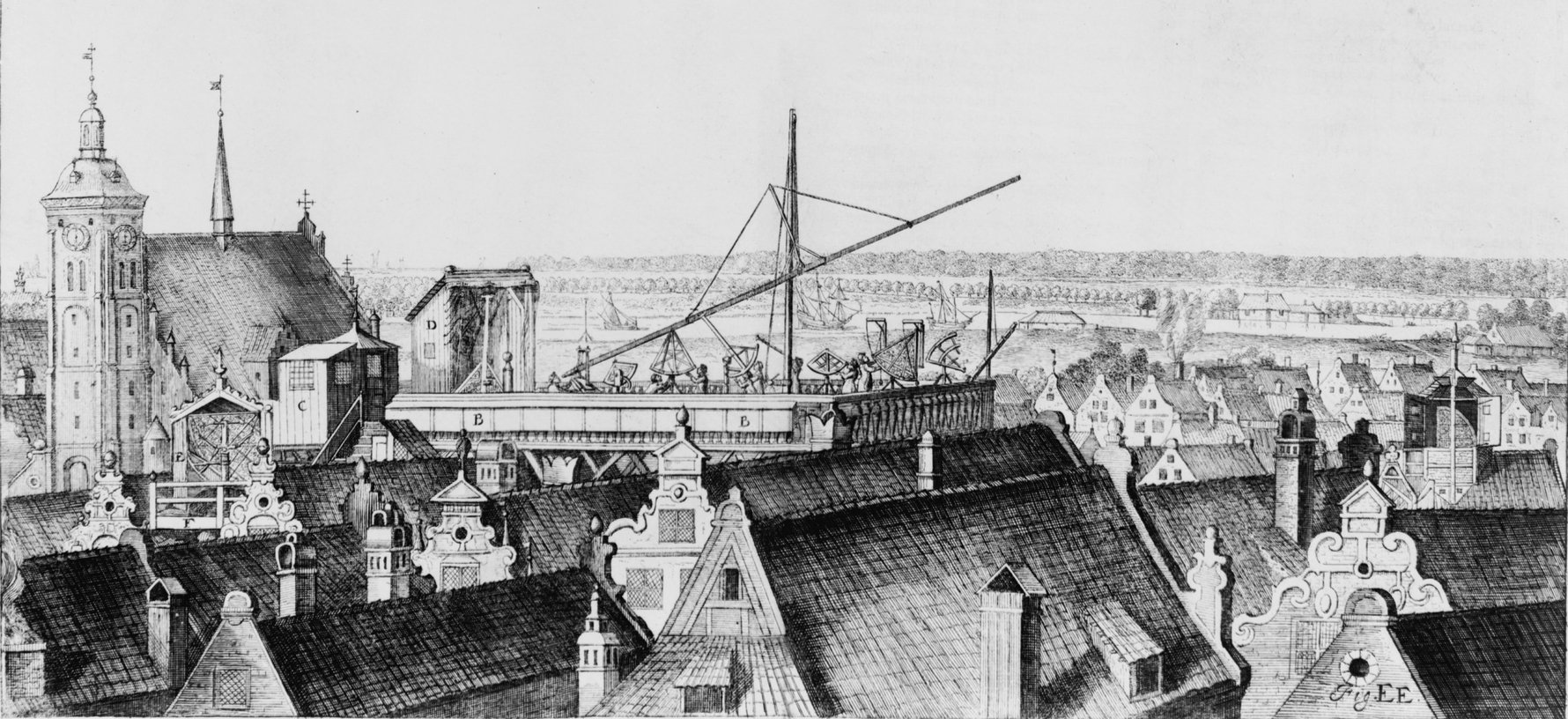
With these homemade tools, Hevelius quickly became a master of his science, discovering numerous constellations and comets, extensively documenting the topography of the moon, and observing the phases of mercury and spots on the sun. These discoveries and observations led Hevelius to publish 20 works in Latin detailing his findings, many using his own well-crafted illustrations.
Unsurprisingly, Hevelius’s work and stunning observatory caught the attention of his peers, and he was elected to the Royal Society of London in 1664 (the first Pole in the Society’s history). He also received a visit from Edmund Halley, discoverer of Halley’s Comet, who sought to compare Hevelius’s use of a sextant with open sights to the use of a sextant with telescopic sights. The winner? Hevelius proved he could assess star positions without a telescope as easily (and accurately) as Halley could with.
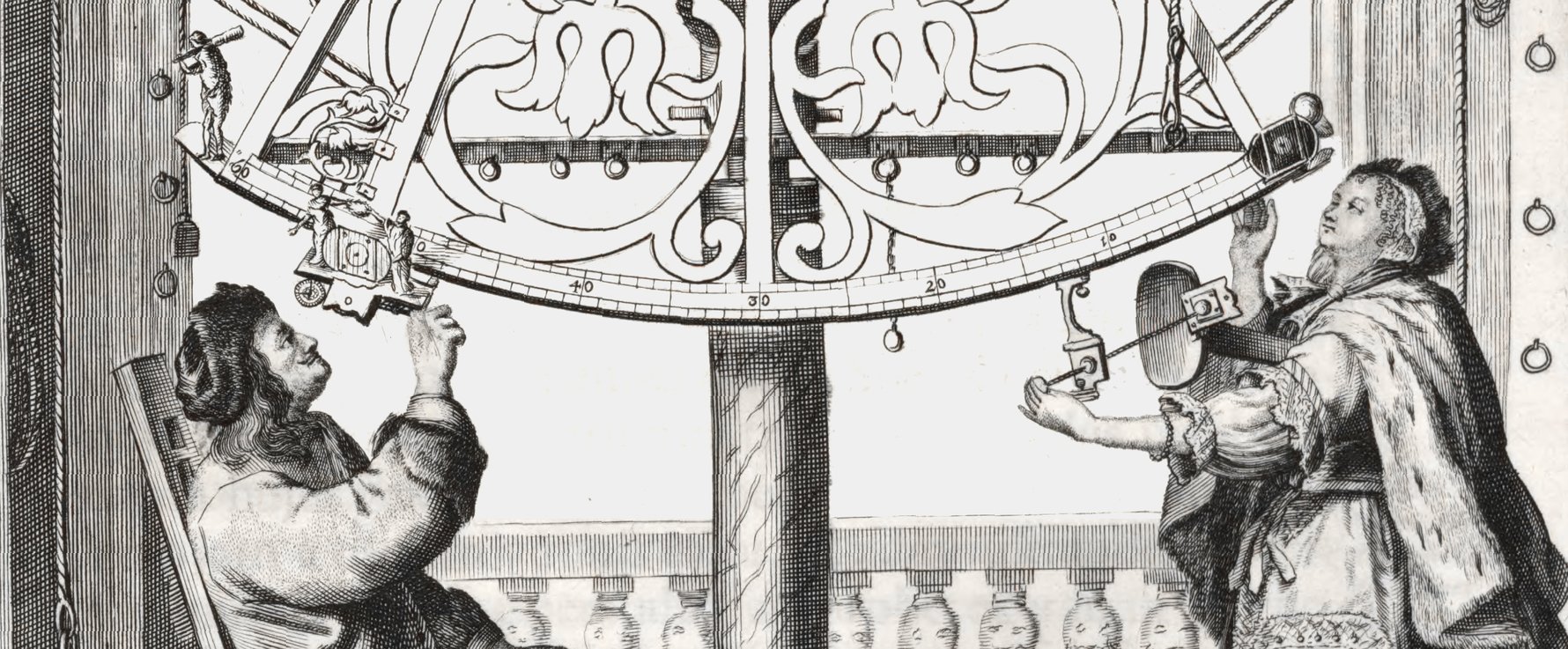
Despite his many roles in the town and running a successful brewery, paying for his research required Hevelius to seek the patronage of Polish kings and queens in order to gain financial support. King Jan Kazimierz and Queen Maria Ludwika were the first royalty to visit the observatory, and King Jan III Sobieski the first to give Hevelius a permanent annual salary for his work - That may explain why Hevelius named a constellation Scutum Sobiescianum (Sobieski’s shield). Hevelius also drew an annual salary from the French King Louis XIV.
Money wasn’t the only hurdle for Hevelius. In 1662, he lost his longtime wife Katherine, who for many years had run the family brewing business so her husband could focus on astronomy. A year later the 52-year-old Hevelius married 16-year-old Elizabeth Koopman, who quickly became a partner and ally in Hevelius’ work (many consider Koopman to be the first female astronomer and The Mother Of Moon Charts). In between giving birth to four children, she managed the observatory and, following his death, completed their jointly created catalogue of 1,564 stars called Prodromus Astronomiae. She is memorialised in astronomy by lending her name to a minor planet and, excitingly, a crater on Venus.
Tragedy struck the family again when a fire ravaged the observatory in 1679; all of Hevelius’s instruments and tools were destroyed in the blaze. Though he quickly repaired the space in time to observe the great comet of 1680 (and named the constellation Sextans in honour of his destroyed instruments) his health was permanently damaged by the shock of the disaster and Hevelius died on his 76th birthday in 1687.
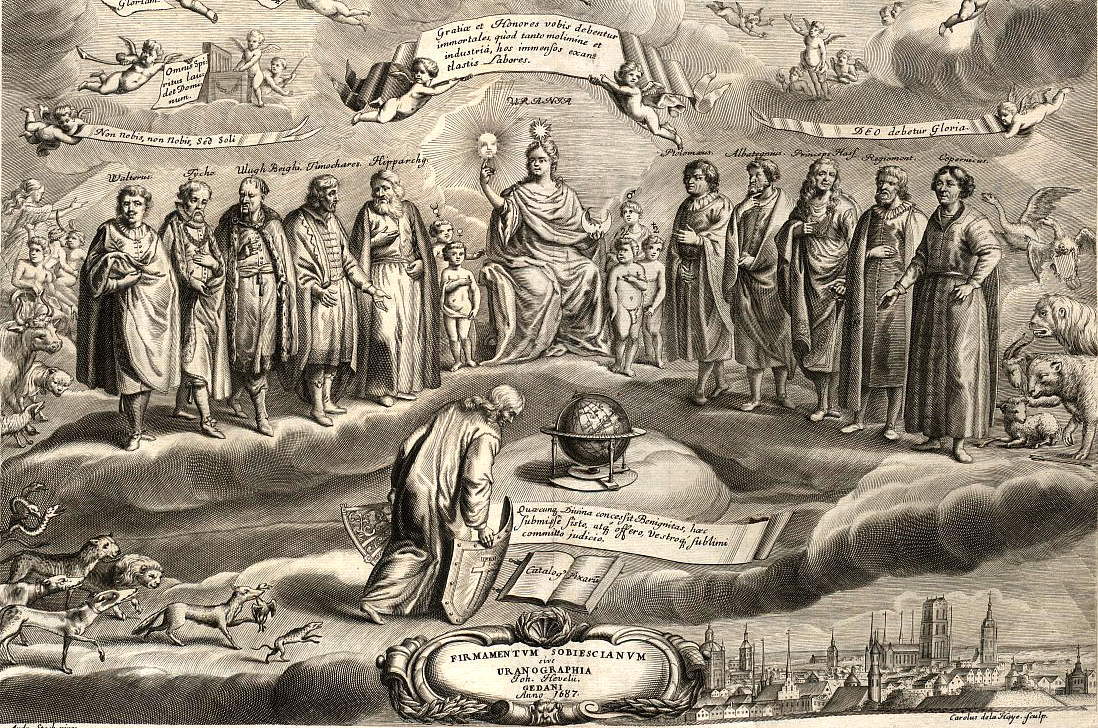
Where to see Hevelius' legacy in Gdańsk?
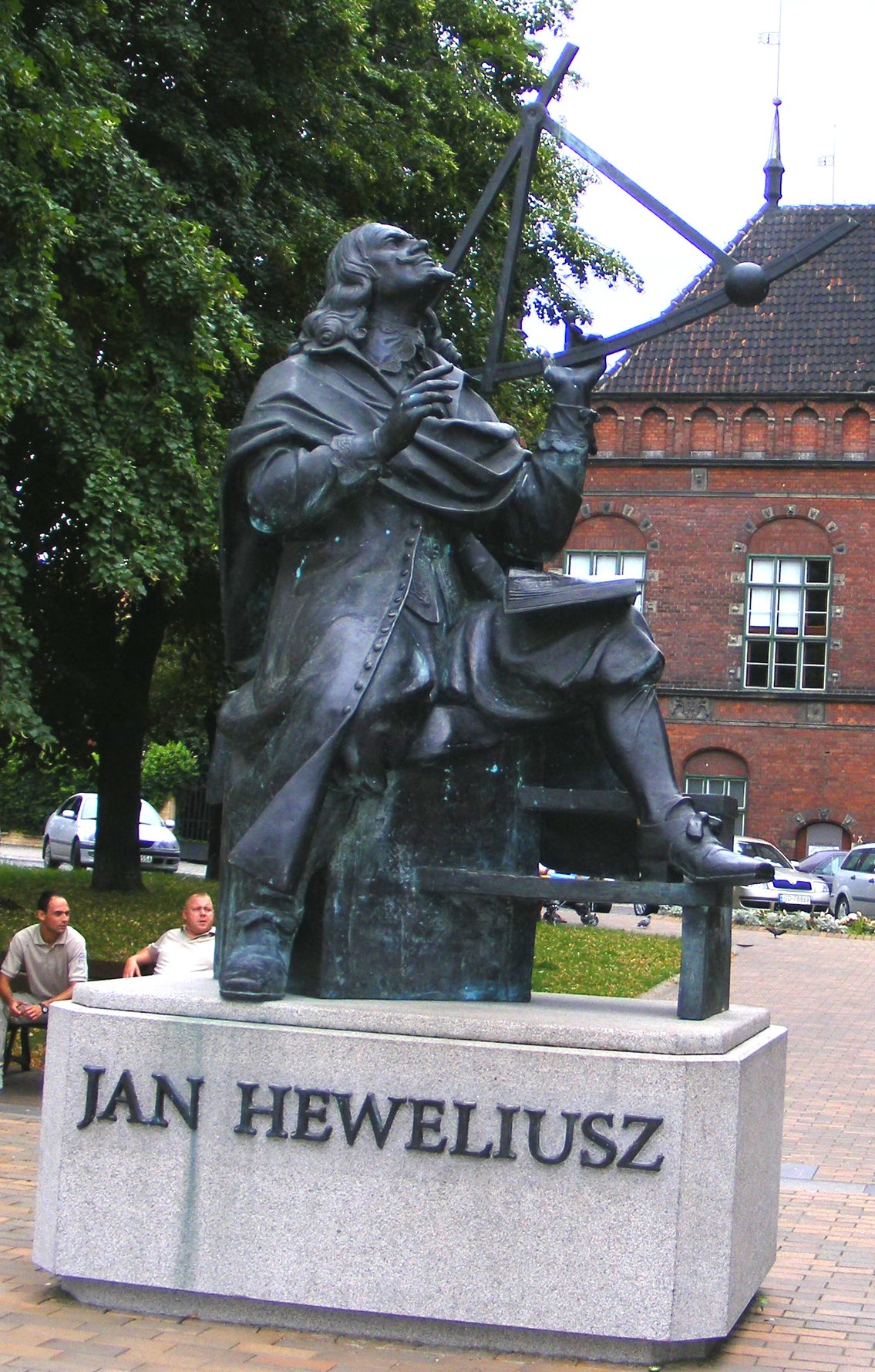
Most notably, the Centrum Hevelianum is a fabulous astro-science museum, named after Hevelius, and designed to teach newer generations about astro-physics! The site of the Hevelius Family Brewery and Home is marked near Gdańsk Główny.
In that same area is the Hevelius monument (see picture) and some beautiful marone and gold murals depicting some of his star maps. Here he is referred to by the Polish version of his name: Jan Heweliusz. Not surprisingly, Gdańsk's 'Man of the Millenium' also has a street named after him, ul. Jana Heweliusza, which runs from Gdańsk Głowny towards the north of Gdańsk Old Town.
A few blocks away is St Catherine's Church, where Hevelius is now entombed. ul. Piwna (English: Beer Street) was, for a long time, named ul. Jopengasse after the beer produced by Hevelius' brewery.


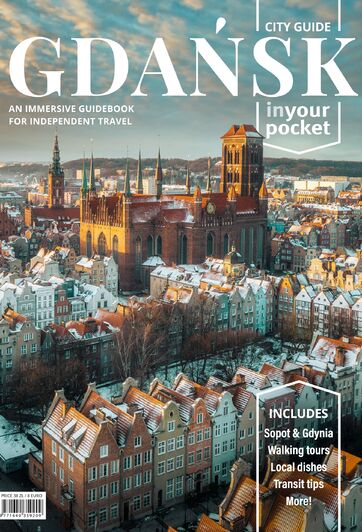
Comments